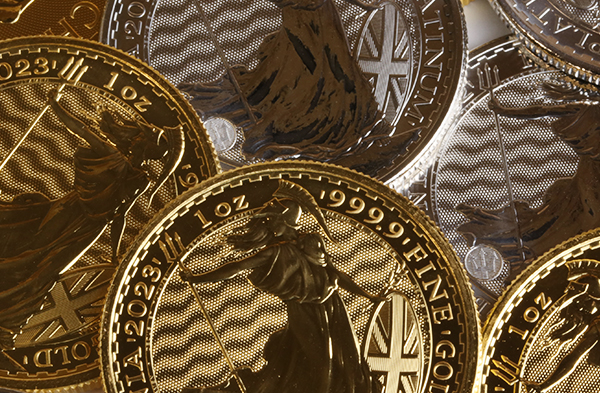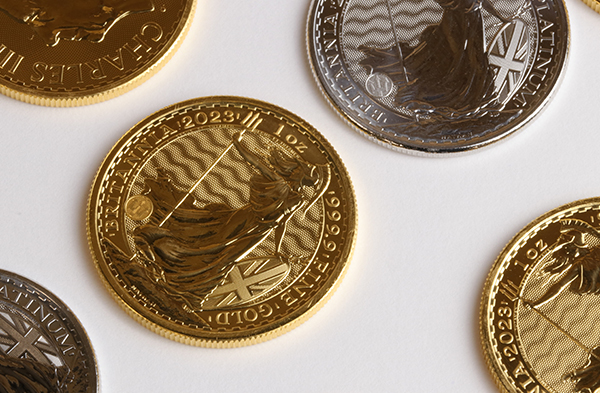
Platinum vs Gold – which is the better investment?
Key Takeaways
- Gold and platinum are both precious metals, but they have different properties and uses. Gold is mainly used for jewellery and bullion, while platinum is used in catalytic converters and industrial applications.
- While platinum is currently less expensive than gold, gold has advantages in terms of market performance, including better liquidity and price stability.
- Gold is often seen as a safe-haven asset and a hedge against inflation, while platinum is more tied to demand from specific industries.
- Investors can incorporate both gold and platinum into their portfolios through various methods, such as physical bullion, ETFs, and mining company stocks.
When choosing between the two, investors should consider their investment objectives, historical performance, currency risk, and market volatility.
Platinum and gold are both precious metals. However, it isn’t always clear which makes the best investment.
Fortunately, this post is here to help. Here, we explain how gold and platinum perform in the marketplace and the benefits and risks of each.
What are platinum and gold, and how are they used?
Platinum is a part of the platinum group of metals that also includes palladium, osmium, iridium, rhodium, and ruthenium. Gold is in a different family, though both are transition metals.
Platinum is white and harder than gold, letting jewellers use it in higher purities. It is also an essential material for vehicle catalytic converters.
Gold has some minor industrial and scientific applications, but its main uses are jewellery and bullion – comprising 46 and 22 per cent of the above-ground stock of the precious metal, respectively. India and China are the largest gold jewellery markets, while the U.S. Federal Reserve is the single biggest bullion holder in the world.
How do platinum and gold compare in terms of value and market performance?
Platinum and gold are more valuable than most other precious metals. On 3 March 2023, the price of an ounce of gold was £1,537, while platinum was £807.
However, gold has some advantages in terms of market performance. The primary reason for this is liquidity. Gold is one of the highest-volume traded commodity markets in the world. Investors can secure large quantities close to spot and transact instantly. By contrast, platinum is harder to obtain, and markets do not clear as often.
Gold also has better price stability than platinum. It is less volatile over time. Platinum is more variable because of its ties with the car industry.
Lastly, gold functions as an alternative currency, while platinum does not. You can’t trade with platinum at scale.
What are the historical trends for platinum and gold, and how have they performed during economic uncertainty?
Gold tends to perform well in times of economic uncertainty. Its price rose considerably during the stagflation of the 1970s and after the 1980 stock market crash. It also boomed again during the 2008 financial crisis and post-COVID-19 era.
However, gold doesn’t perform as well during periods of economic expansion and financial optimism. For instance, it underperformed the market for most of the 1980s, 1990s, and 2010s.
Platinum’s price fluctuated considerably over the last twenty years. However, it is not analogous to gold. Investors do not consider it a hedge against inflation but a commodity in the true sense of the word.
Historically, investors used platinum for jewellery, batteries, fuel cells and the production of caustic chemicals. However, industrial firms now use it for other applications, including computers, cancer treatment and dental apparatus.
The price of platinum doesn’t reflect economic sentiment but activity. The more demand for the metal from manufacturers, the higher the price.
What are the risks and benefits of investing in platinum and gold?

The following table shows some risks and benefits of investing in platinum and gold.
Risks and benefits of investing in platinum and gold
| Platinium | Gold | |
| Benefits | ||
| Safe-haven asset | Can be considered a safe-haven asset but demand-sensitive | The best safe-haven asset in history, offering stable prices during economic contractions |
| Inflation hedge | A durable physical commodity in limited supply | The ultimate inflation hedge during prolonged uncertainty |
| Industrial uses | Significant industrial demand in car-making, jewellery, electronics, and batteries | Minor industrial uses, including electronics, dentistry, and aerospace |
| Risks | ||
| Supply and demand | Subject to fluctuations in demand. Price may fall during recessions or contractions in output. | Changes in mining supply are difficult and depend on price. Minimal links to the real economy. |
| Volatility | Significantly more volatile than gold. Prices are highly dependent on industry demand | Prices can be volatile and depend on investor sentiment, geopolitical events, and currency crises |
| Economic circumstances | Changes in interest rates can affect the price of platinum | Higher inflation or rising interest rates can impact the price of gold |
How can investors incorporate platinum and gold into their investment portfolio, and what are some investment strategies for each metal?
Investors can incorporate gold into their investment portfolio by,
- Buying physical gold, including gold coins, gold bars and jewellery
- Buying gold-backed ETFs
- Purchasing gold stocks (i.e. mining companies).
Investors can add platinum to their investment portfolio by,
- Buying physical platinum, such as bullion, rounds, and jewellery
- Purchasing platinum futures on the commodities markets (retail investors cannot usually do this)
- Investing in platinum-related stocks (such as mining companies)
- Purchasing platinum ETFs
What are some factors to consider when deciding between platinum and gold as an investment option?
When choosing to invest in gold or platinum, investors should consider the following:
- The objective of their investment. Gold is a hedge against inflation and protection during times of economic uncertainty. Platinum is a commodity and more amenable to short-term trading, depending on conditions in specific industries.
- Historical performance. The gold price is currently high, while platinum is at historic lows (March 2023). Therefore, investors may want to opt for the latter, even if it doesn’t provide the same function as gold.
- Currency risk. Different currencies can vary at different rates. The price of gold or platinum may drop in one and rise in another.
- Market volatility. Lastly, investors should consider the volatility of platinum and gold. Platinum tends to vary more because it has closer linkages to the real economy.

+ There are no comments
Add yours